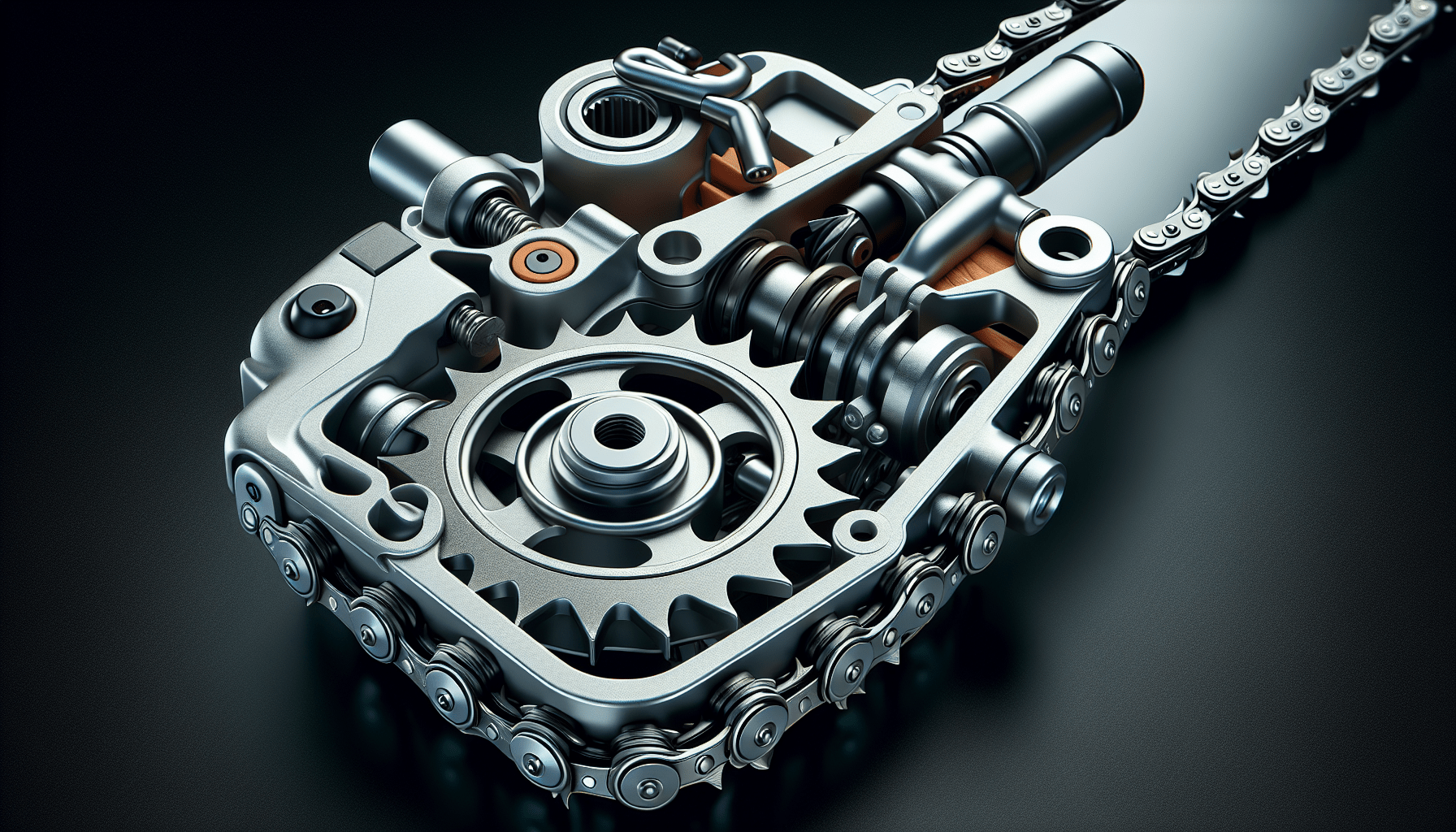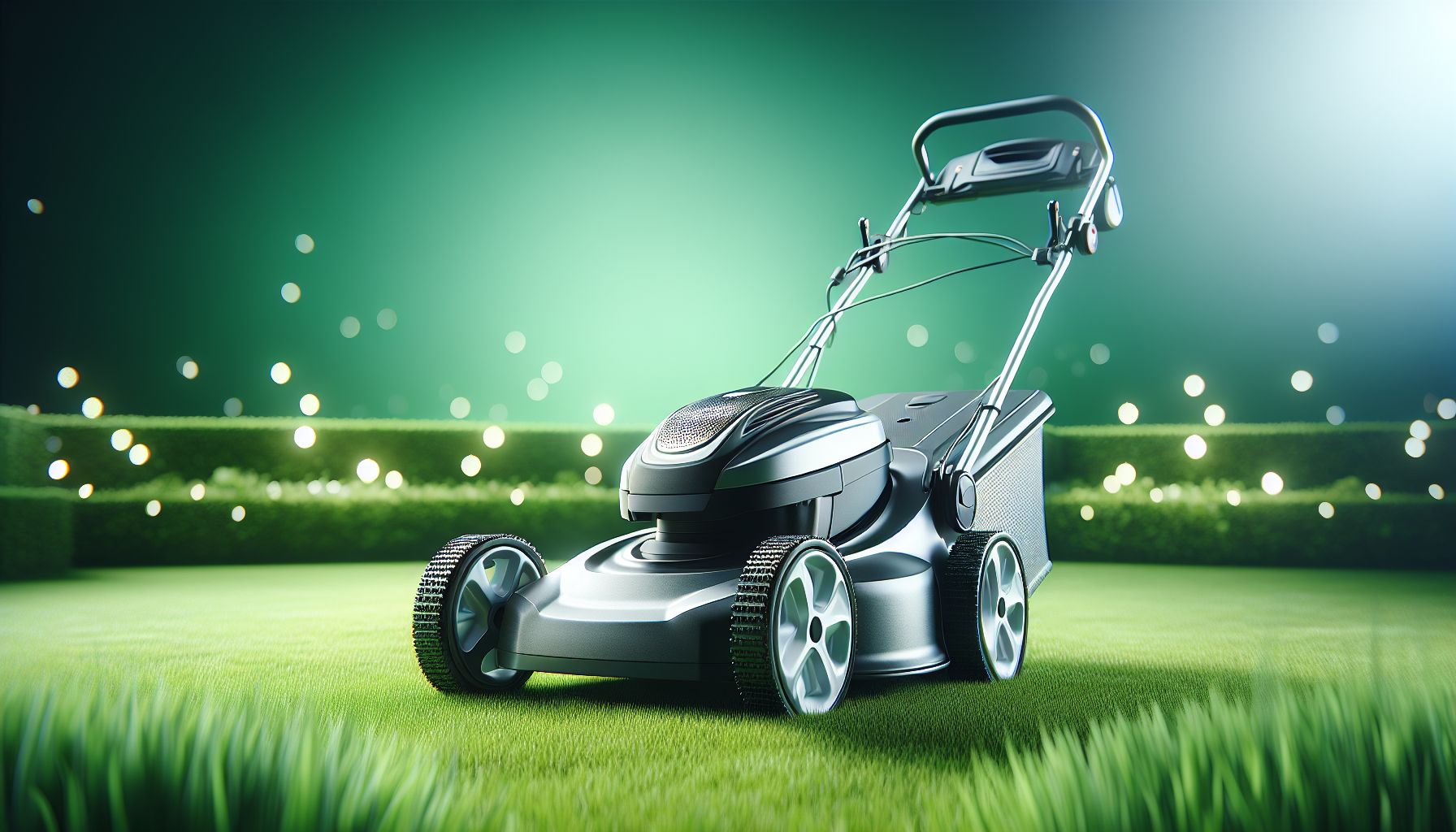Chainsaws, those powerful tools that often bring to mind images of cutting down trees and clearing dense forests. But have you ever wondered if they come equipped with safety mechanisms? After all, with their razor-sharp chains and roaring engines, it’s only natural to be concerned about the potential dangers they pose. In this article, we’ll explore the world of chainsaws and uncover whether or not these formidable machines have built-in safety features to protect both the user and those around them. Chainsaws are powerful tools that are widely used in various industries and applications. From logging and landscaping to demolition and construction, chainsaws offer a quick and efficient way to cut through wood and other materials. However, due to their immense cutting power, chainsaws can be dangerous if not used properly. That’s why chainsaws are equipped with various safety mechanisms to help protect the user from potential accidents and injuries.
Brief history of chainsaws
Chainsaws have a long and fascinating history that dates back to the early 19th century. The first chainsaw-like device was developed by a German orthopedist named Bernhard Heine in 1830. This early version of the chainsaw consisted of a rotating chain with cutting teeth attached to a handle. It was primarily used for cutting through bone during surgeries.
Over the years, chainsaw designs have evolved and improved, and they have become indispensable tools in many industries. Modern chainsaws are equipped with advanced safety features that ensure user protection and prevent accidents.
Common uses of chainsaws
Chainsaws are versatile tools that find applications in various industries and tasks. Some common uses of chainsaws include:
- Forestry and logging: Chainsaws are widely used in the timber industry for felling trees, bucking logs, and clearing forests.
- Landscaping and arboriculture: Chainsaws are essential for pruning and trimming trees, shrubs, and hedges.
- Home improvement and construction: Chainsaws are commonly used for cutting lumber, trimming branches, and shaping wood for various DIY projects.
- Emergency and rescue operations: Chainsaws are utilized by emergency personnel and rescue teams for cutting through debris during natural disasters or rescue missions.
These are just a few examples of how chainsaws are used in different industries. Their versatility and cutting power make them indispensable tools in various applications.
Importance of safety when using chainsaws
When using a chainsaw, safety should always be the top priority. Chainsaws are powerful tools that can cause serious injuries if not used correctly. That’s why it is essential to be aware of and understand the safety features and mechanisms that are built into chainsaws.
Using a chainsaw with proper safety precautions can significantly reduce the risk of accidents and injuries. By following the manufacturer’s instructions, adhering to safety guidelines, and utilizing the safety features, you can ensure a safe and efficient operation.
Primary Safety Features
To enhance user safety, chainsaws are equipped with primary safety features. These features are designed to minimize the risk of accidents and injuries during operation. Let’s take a closer look at each of these safety features.
Chain Brake
The chain brake is one of the most crucial safety features of a chainsaw. Its primary function is to stop the chain from rotating in the event of kickback or other sudden movements. This immediate chain stoppage prevents the chain from causing severe injuries to the operator.
There are two types of chain brakes commonly found in chainsaws – inertia activated and manually activated. Inertia-activated chain brakes utilize a weighted mechanism that detects sudden movements or kickback and engages the brake automatically. On the other hand, manually activated chain brakes require the user to engage the brake using a specific button or lever.
Chain brakes are highly effective in preventing accidents and injuries, especially in situations where the chain can come in contact with the operator.
Throttle Lockout
The throttle lockout is another essential safety feature found in chainsaws. Its primary role is to prevent the accidental acceleration of the chainsaw. The throttle lockout is usually a lever or button that needs to be pressed or engaged before the throttle trigger can be activated.
By requiring an extra step or action before the throttle trigger can be engaged, the throttle lockout helps prevent unintended acceleration that could potentially lead to accidents or injuries. This safety feature provides an added level of control and ensures that the chainsaw starts only when intended.
Kill Switch
The kill switch is a fundamental safety feature that allows the operator to shut off the chainsaw quickly. It is usually a button or toggle switch located in a convenient and accessible position on the chainsaw’s handle. In case of an emergency or when immediate shutdown is required, the kill switch offers a simple and efficient way to stop the engine instantaneously.
Knowing the location and operation of the kill switch is essential for user safety. In situations where the chainsaw needs to be stopped immediately, such as in the event of a kickback or loss of control, the kill switch can prevent further accidents or injuries.
Emergency Stop Button
In addition to the kill switch, some chainsaws are also equipped with an emergency stop button. The emergency stop button is another safety mechanism that allows for the immediate shutdown of the chainsaw. It is usually a large, easily accessible button that can be pressed with minimal effort.
The emergency stop button is specifically designed for emergency situations where the chainsaw needs to be stopped immediately, such as when the operator loses control or encounters a sudden hazard. By providing a large and easily accessible button, this safety feature ensures that the chainsaw’s operation can be halted quickly and effectively.
Chain Brake
The chain brake is a primary safety feature in chainsaws that plays a critical role in preventing accidents and injuries. It is designed to stop the chain’s rotation in case of kickback or sudden movements, minimizing the risk of contact with the operator’s body or limbs.
There are two main types of chain brakes found in chainsaws – inertia activated and manually activated.
Inertia-activated chain brakes utilize a weighted mechanism that detects sudden movements or kickback. When the chainsaw experiences a sudden upward or backward movement, the inertia of the weighted mechanism triggers the engagement of the chain brake, stopping the chain’s rotation almost instantly. This type of chain brake is highly effective in preventing accidents caused by kickback.
On the other hand, manually activated chain brakes require the user to actively engage the brake using a specific button or lever. By manually activating the brake, the user can ensure that the chain stops immediately in case of emergencies or when necessary.
While chain brakes are highly effective in preventing accidents, it is important to note that they do have limitations. Chain brakes are not foolproof and cannot guarantee complete safety. They may not engage fast enough or with sufficient force to prevent injuries in all situations. Therefore, it is crucial for operators to use additional safety measures, such as wearing appropriate personal protective equipment like chainsaw chaps and helmets, to further minimize the risk of injury.
Throttle Lockout
The throttle lockout is an essential safety feature that prevents accidental acceleration of the chainsaw. It adds an extra layer of control to the operation of the chainsaw, ensuring that the throttle trigger can only be activated intentionally.
The throttle lockout is typically a lever or button that needs to be pressed or engaged before the throttle trigger can be activated. This mechanism ensures that the chainsaw starts only when the operator deliberately intends to start it, preventing unintended acceleration that could potentially lead to accidents or injuries.
Different types of throttle lockout mechanisms exist in chainsaws. The most common design involves a lever that needs to be pressed with the thumb or fingers. This lever is usually located near the handle and requires a deliberate action to engage or release.
Some chainsaws may also have additional safety features incorporated into the throttle lockout mechanism, such as a safety switch that needs to be toggled or an interlock system that requires two hands to activate the throttle trigger. These additional safety measures provide an extra level of control and prevent accidental starts.
By incorporating a throttle lockout into the design of chainsaws, manufacturers prioritize the safety of operators and aim to reduce the risk of unintended acceleration and potential accidents.
Kill Switch
The kill switch is a vital safety feature in chainsaws that allows the operator to shut off the engine quickly. It provides a simple and efficient way to stop the operation of the chainsaw in emergencies or when immediate shutdown is required.
The kill switch is typically a button or toggle switch located in a convenient and accessible position on the chainsaw’s handle. It can be easily reached without having to release the grip on the chainsaw or take a hand off the handle.
In case of an emergency, such as a kickback, loss of control, or encountering a sudden hazard, the kill switch offers a straightforward way to stop the chainsaw immediately. By pressing the kill switch, the ignition system is shut off, completely stopping the engine and preventing any further rotation of the chain.
Knowing the location and operation of the kill switch is crucial for user safety. Operators should familiarize themselves with the chainsaw’s specific kill switch and practice its operation before using the chainsaw. In emergency situations, the immediate activation of the kill switch can significantly reduce the risk of accidents or injuries.
Emergency Stop Button
In addition to the kill switch, some chainsaws are equipped with an emergency stop button. This safety feature provides an easily accessible way to stop the operation of the chainsaw in emergency situations.
The emergency stop button is usually a large, prominently placed button that can be pressed with minimal effort. It is designed to be easily reached and operated in emergency scenarios where immediate shutdown of the chainsaw is required.
When the emergency stop button is pressed, it immediately stops the operation of the chainsaw, shutting off the engine and stopping the rotation of the chain. This quick and effortless shutdown mechanism ensures that the chainsaw can be halted effectively, preventing any further accidents or injuries.
While the kill switch and the emergency stop button serve similar purposes, the presence of both safety features provides redundancy and ensures that the chainsaw operation can be stopped quickly from multiple locations on the tool. Having an emergency stop button adds an extra layer of safety and convenience, especially in high-risk situations or when quick access to a shutdown mechanism is crucial.
Additional Safety Features
In addition to the primary safety features, modern chainsaws are equipped with several additional safety mechanisms to further enhance user protection. These features work in conjunction with the primary safety features to minimize the risk of accidents and injuries.
Anti-vibration system
Chainsaw operation can generate significant amounts of vibration, which can cause fatigue and discomfort to the operator. To reduce the strain on the user, many chainsaws feature anti-vibration systems. These systems incorporate vibration-dampening elements such as rubber mounts or springs that absorb and minimize the vibrations before they reach the operator’s hands and arms. By reducing the vibration, this safety feature helps prevent long-term musculoskeletal injuries and improves user comfort during prolonged use.
Chain catcher
A chain catcher is a safety device designed to prevent the chain from striking the operator in case it derails or breaks during operation. It is typically a metal or plastic guard that is installed near the chainsaw’s guide bar. The chain catcher helps to redirect a broken or derailed chain away from the user, preventing it from causing injury. This safety feature provides an additional layer of protection in case of chain malfunctions.
Safety chain
A safety chain, also known as a low-kickback chain, is a specially designed chain that reduces the risk of kickback during operation. Kickback occurs when the chain’s teeth on the top of the guide bar make contact with an object, causing the chainsaw to move backward and upward suddenly. Safety chains are engineered to minimize kickback by incorporating special design features such as shorter cutting teeth and built-in depth gauges. By reducing the likelihood and severity of kickback, safety chains help prevent accidents and injuries.
Front hand guard
The front hand guard is a protective component located in front of the handle on the chainsaw. It acts as a shield and helps prevent the operator’s hand from coming into contact with the chain during operation. The front hand guard is especially important during kickback situations when the chain can be forcefully thrown in the direction of the operator. By providing a physical barrier, the front hand guard adds an extra layer of safety and minimizes the risk of injuries.
Throttle trigger lock
Some chainsaws are equipped with a throttle trigger lock, which prevents unintentional activation of the throttle trigger. The throttle trigger lock is typically a small switch or button that can be engaged to lock the throttle trigger in the idle position. This feature is especially useful during transportation and storage, as it ensures that the chainsaw does not start accidentally. By preventing unintended activation, the throttle trigger lock helps maintain user safety when the chainsaw is not in use.
Maintenance and Safety
To ensure the proper functioning and effectiveness of the safety mechanisms, regular maintenance of the chainsaw is essential. Regular maintenance helps identify any issues or malfunctions in the safety features, ensuring that they are in working order during operation.
Some key maintenance practices include:
- Regular inspection of the safety features, such as the chain brake, throttle lockout, kill switch, and emergency stop button, to ensure they are functioning properly.
- Cleaning and lubricating the chain, bar, and sprocket regularly to reduce friction and prevent premature wear.
- Checking and tightening all bolts, screws, and fittings to ensure that the chainsaw is securely assembled.
- Sharpening the chain regularly to maintain optimum cutting performance and prevent kickback.
- Performing any necessary repairs or replacements promptly to address any safety-related concerns.
In addition to regular maintenance, proper storage and transportation of the chainsaw are crucial for safety. Chainsaws should be stored in a secure and dry location, away from the reach of children or unauthorized users. When transporting the chainsaw, it should be properly secured to prevent accidental activation and ensure the safety of the operator and others.
User Responsibility
While chainsaws are equipped with various safety features, user responsibility plays a vital role in ensuring safe chainsaw operation. Operators must take the necessary steps to educate themselves on chainsaw safety and adhere to the manufacturer’s instructions and safety guidelines.
Educating oneself on chainsaw safety
Before using a chainsaw, it is important to educate oneself on the safe operation and proper handling of the tool. This includes understanding the function and operation of the safety features, recognizing potential hazards, and being aware of safety precautions. There are numerous resources available, such as user manuals, online tutorials, and training programs, that provide valuable information on chainsaw safety.
Adhering to manufacturer instructions
Manufacturers provide specific instructions and guidelines for the safe and proper use of their chainsaws. It is essential to read and understand these instructions before operating the chainsaw. Following the manufacturer’s instructions ensures that the chainsaw is used correctly and optimizes the performance of the safety features. Failure to adhere to these instructions may result in accidents, injuries, or damage to the equipment.
Proper training and certification
For individuals using chainsaws in professional capacities, proper training and certification are crucial. Training programs provide comprehensive knowledge of chainsaw safety, operation, and maintenance. By completing a chainsaw training course and obtaining the necessary certification, operators can demonstrate their competence in safe chainsaw operation. Professional training also ensures that operators are aware of industry-specific safety regulations and best practices.
Conclusion
Chainsaws are powerful tools that offer great efficiency and effectiveness in various industries and applications. They are designed with numerous safety mechanisms to protect operators from potential accidents and injuries. By utilizing the primary safety features, such as the chain brake, throttle lockout, kill switch, and emergency stop button, operators can greatly reduce the risk of accidents during chainsaw operation.
Additionally, the presence of additional safety features, such as the anti-vibration system, chain catcher, safety chain, front hand guard, and throttle trigger lock, further enhances user protection and minimizes potential hazards.
It is important to prioritize safety when operating a chainsaw and take personal responsibility for adhering to safety guidelines and maintaining the chainsaw properly. By educating oneself, following manufacturer instructions, and obtaining proper training and certification, operators can ensure the safe operation of chainsaws and promote a culture of safety within the workplace or personal use.
Overall, chainsaws are equipped with various safety features to enhance user protection. Understanding and utilizing these safety mechanisms, along with practicing general safety measures, such as wearing appropriate personal protective equipment and maintaining good working conditions, are essential for the safe and efficient operation of chainsaws.


